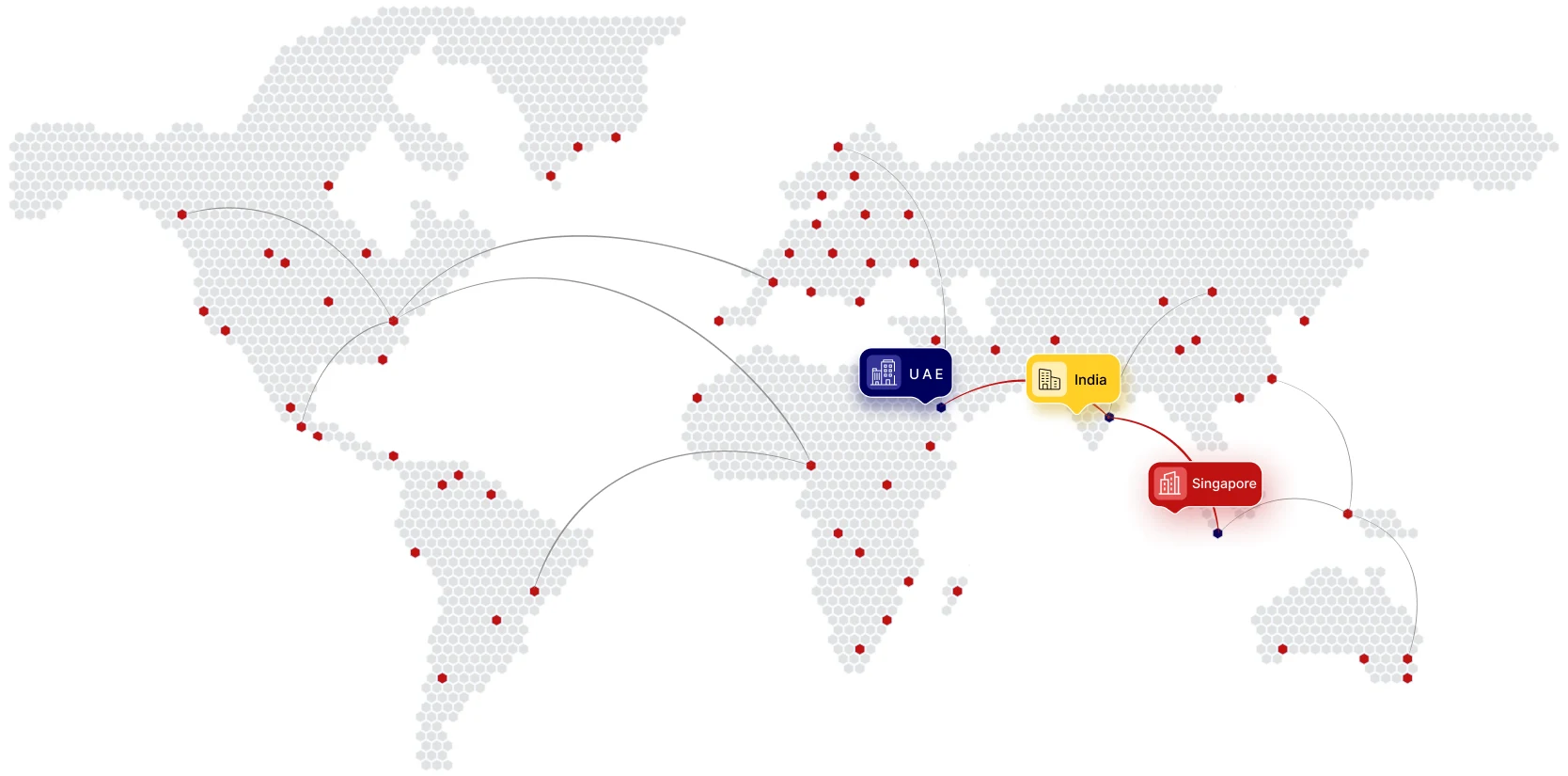- Article
- March 7, 2015
With Egypt’s economic conference barely a week away, anticipation about the opportunities it will unveil is high in the country as well as among foreign business communities.
Those familiar with Egypt know that the scope for investing there is immense because expansions and improvements are needed in every economic sector.
That is why the outcome of the conference on March 13 to 15, will be pivotal for the economy’s growth and stability over the next five to six years – a critical recovery phase long overdue after the dramatic deterioration experienced since 2011.
The conclusions reached will have a wide-ranging resonance and, therefore, implications for international peace and security in the broader region.
Anchoring economic stability in the country of 84 million people, with almost 30 per cent youth unemployment and high international market exposure, is imperative for Egypt to address its economic, social and security challenges.
This in turn would enable it to maintain its much-needed constructive role in the acutely volatile geopolitical environment casting a shadow over the Middle East.
The dust from the 2011 revolutionary storm in Egypt and its destabilising aftermath has not yet settled completely. The turbulent events coincided with the hard-hitting repercussions of the global financial crash and economic recession that caused a worldwide slump in foreign direct investment (FDI).
With the recent softening of hydrocarbon prices, the onus is shifting, perhaps sooner than expected, more towards an internally-driven economic recovery than one leveraged by external transfers. That may well be a blessing in disguise.
Steady improvements have already been observed in Egypt’s economic prospects with a robust reform agenda being pursued by the government. This increasingly positive outlook has been confirmed in recently released assessments by Moody’s and the IMF.
Indeed, behind the dust veil that has clouded its economic future for three years, Egypt remains promising for investment. Since the president Abdel Fattah El Sisi’s debut at the 2014 UN General Assembly and his announcement of rigorous economic and investment plans and reforms, large business missions from Russia, Britain, the US, Italy and the GCC have visited Egypt for early-bird explorations of what the new political environment may offer.
Not long ago, in 2010, Egypt had come to be regarded as “a rising star” as it joined for the first time the ranks of the top 25 emerging market destinations for FDI, according to AT Kearney’s FDI Confidence Index. During 2004 to 2010, annual economic growth had averaged 5.5 per cent, although this did not translate proportionately into enough jobs for the fast-growing workforce.
Egypt has been off Kearney’s top 25 emerging countries list since 2010. After economic growth had collapsed to less than 1 per cent in 2011, it recovered to only about 2 per cent through 2014. New FDI flows to Egypt were slashed by half, from about $8 billion, between 2008 and 2014.
Nevertheless, several factors that had turned Egypt into an up-and-coming capital destination still exist, such as its hydrocarbon resources, large consumer market, and diligent business environment reforms that even the World Bank commended in its Doing Business report.
Additional legislative business sector reforms are now due for presidential ratification. And despite the revamped minimum wage bill, labour costs are still among the lowest in the region thanks to the current oversupply of job seekers. Recent steps the central bank took to allow further depreciation of the Egyptian currency support efforts to boost trade competitiveness, improving investment incentives.
Egypt is a member of the Greater Arab Free Trade Area and the Common Market for Eastern and Southern Africa, and is on its way to a free trade agreement with Russia.
The government’s plan to capitalise extensively on Egypt’s strategic location through a multi-sector development programme for the Suez Canal Zone is designed to serve as a major catalyst for attracting FDI to fuel a sustained economic expansion.
Ambitious overall annual targets have been set for the next five years: raising economic growth to 6 per cent; reducing inflation to 7 per cent; shrinking the fiscal deficit and external debt to 8 per cent and 80 to 85 per cent of GDP, respectively.
The government has prepared plans for projects ranging from mega-ventures to microfinance schemes for which studies have been conducted. Their implementation would provide stimulus for investment in the production of supporting goods and services, and in vertical integration projects.
Infrastructural developments are among the government’s top priorities, including in the energy and transportation sectors that are cornerstones for raising productivity and augmenting the capital resource base. They are also major contributors to employment.
The FDI influx that the Egyptian government is striving to attract with its macroeconomic stabilisation policies and investment menu that an expansion in employment, GDP and income no doubt require, also holds risks that could jeopardise the recovery. Most critical is the risk of summoning another phase of non-inclusive economic growth that leaves millions behind.
A repeat of the 1990s’ saga whose consequences came in to full view in 2007-08 would be traumatic this time around.
Today financial and economic coping thresholds, on the individual as well as state levels, are much lower. External factors added to the mix of internal stressors have increased Egypt’s vulnerability to significant regional and international shocks.
Narrow concentration of investment expansion in a few sectors would also sabotage the goals of lower inflation and inclusive economic growth.
Such diversions would have counterproductive consequences for Egypt’s external sector and standing in international finance, whose health is important not only for investor confidence but also for long- term stability.
Regardless of policy specifics, strengthening the rule of law is now indispensable for investment efforts to succeed, broad-based development to be realised, and social justice to be widely felt.
For more details reach us at [email protected]
- Article
- March 7, 2015
Price cutting and weak euro boost activity
London: Price cutting and a weaker currency helped Eurozone business activity accelerate in February, according to surveys published just before the European Central Bank embarks on a trillion-euro stimulus programme.
Survey compiler Markit said the surveys pointed to first quarter GDP growth of 0.3 percent, the same as at the tail-end of 2014, as business activity expanded in all of the bloc’s four biggest economies for the first time since last April.
That growth prediction matches the median forecast in a Reuters poll taken last month.
“The outlook has brightened for all countries. The weaker euro should help boost exports and, perhaps most importantly, the commencement of quantitative easing by the ECB should stimulate the economy as we move through the year,” said Chris Williamson, chief economist at Markit.
The euro has fallen nearly 8 percent since the start of the year against the dollar, helping drive Markit’s final February Composite Purchasing Managers’ Index (PMI) up to a seven-month high of 53.3.
Although weaker than a preliminary estimate of 53.5 it comfortably beat January’s 52.6 and achieved its 20th month above the 50 level that separates growth from contraction.
A PMI covering the Eurozone’s dominant service industry rose one point from January to 53.7 but was similarly lower than a flash reading of 53.9.
To encourage demand firms have been cutting prices for almost three years — the output price index again came in sub-50 at 47.9 — and the ECB has been battling to bring inflation back to its near 2 per cent target. Inflation stood at -0.3 percent in February.
As part of that battle, and to stimulate growth, the central bank plans to flood markets with cash. Service firms were optimistic about the plan as their business expectations for the coming 12 months were at their highest since May 2011. The subindex was 64.1.
Detailed PMI data are only available under licence from Markit and customers need to apply to Markit for a licence.
For more details reach us at [email protected]
- Article
- March 7, 2015
City leads Mena region; alumni group picks Dubai as the most attractive place to live in
Dubai: Dubai ranked first in the Middle East and Africa region for quality of living, according to a report released on Wednesday by human resources consultancy Mercer.
The 2015 Quality of Living report, which ranks 230 cities, indicates that Dubai was ranked 74th globally, having dropped one spot from 2014, while Abu Dhabi took the 77th spot, up one place from 2014.
In another report by the Alumni Association of graduate business school Insead released November last year, Dubai was ranked the most attractive place to live in terms of professional and private life.
The report surveyed respondents of 35 different nationalities to rate 15 key cities in the world in terms of economic dynamism (quality of labour, access to funding); quality of life (sports and cultural facilities, air quality); cost of living (real estate, dining, entertainment) and overall attractiveness (young talent, access to technology). Dubai ranked first in economic dynamism, third in overall attractiveness and fourth in terms of quality of life and cost of living.
Stable
As per Mercer’s report, most of the countries in the region maintained a stable position compared with 2014, with Amman, for instance, climbing five places to 122, according to the report. However, Beirut dropped eight places to rank 181, while Cairo fell nine places to 170.
Vienna was the city with the best quality of living for the second consecutive year. It was followed by Zurich, Auckland, and Munich, having taken the second, third, and fourth place respectively.
Fifth-place was taken by Vancouver, followed by Singapore at 26.
Infrastructure has a big effect on the quality of living that expatriates experience, said Nuno Gomes, Information Solutions Middle East Leader at Mercer, in a statement.
“While often taken for granted when functioning to a high standard, a city’s infrastructure can generate severe hardship when it is deficient. Companies need to provide adequate allowances to compensate their international workers for these and other hardships,” Gomes added.
He said that multinational companies need to be aware of current events and local circumstances to ensure their expatriates are compensated appropriately and an adequate hardship allowance is included in compensation packages.
“Factors such as internal stability, law enforcement effectiveness, crime levels and medical facilities are important to consider when deciding on an international assignment, and the impact on daily life that could be encountered by the expatriate in overseas placements,” he said.
Mercer’s report considers a city’s political and social environment, medical care and health considerations, public services, recreation facilities and natural environment, among others.
Dubai is also the most popular long-haul destination from many European cities, including Frankfurt and Munich.
For more details reach us at [email protected]
- Article
- March 7, 2015
Greece’s new Finance Minister, Yanis Varoufakis, has said that Greece is considering an “extraordinary tax” on wealthy individuals to expand on the new left-wing Government’s revenue streams.
The comments came during an interview with Greek television station SKAI TV on February 28. He said that the main objective would be to tax people “who have money, but have never paid.” This levy would apply above a specific income threshold, he indicated, but he did not provide additional details on the proposal. To support low income taxpayers, the Government will seek to phase back in the EUR12,000 (USD13,350) exempt threshold for the special solidarity contribution – a progressive, “crisis” levy introduced in 2011, which is levied at a rate of 1-4 percent, in addition to income tax.
He also briefly discussed the Government’s take on value-added tax (VAT) policy. He said that, as part of talks with the European Commission, the Government will be required to review certain concessionary rates to levy the headline rate on a broader range of goods and services, bringing Greece’s VAT rules closer into line with the VAT systems in other European Union member states. With reference to the Greek border regions, he said the Government is opposed to increasing VAT on medicine, food, and books.
For more details reach us at [email protected]
- Article
- March 7, 2015
Report ranks countries investment potential relative to other countries within the Organisation of Islamic Cooperation
Manama: The UAE was ranked third on the inaugural 2015 Islamic Growth Markets Investments Index, which ranks countries’ investment potential relative to other members within the Organisation of Islamic Cooperation (OIC).
The report was released today by Thomson Reuters in cooperation with DinarStandard Foundation, consulting and research specialists in the field of Islamic markets, during the Islamic Investment Portal Forum In Bahrain.
The index is based on a set of standards — growth momentum, investment momentum and comparative risk — covering nine categories of growth in a country.
For more details reach us at [email protected]
- Article
- March 7, 2015
From February 25 to 27, 2015, delegates from the European Free Trade Association (EFTA) states and Turkey met in Geneva for a second round of negotiations on the modernization and expansion of their existing free trade agreement (FTA).
According to a statement from EFTA – comprising Switzerland, Iceland, Liechtenstein, and Norway – the two sides had constructive discussions and were able to achieve further progress on an update and expansion of their FTA in several areas, including notably on trade in goods, trade in services, intellectual property rights, and sustainable development. The delegations scheduled a further round of negotiations for early summer.
Bilateral EFTA-Turkey merchandise trade has increased steadily since 2001 and reached USD5.4bn in 2014. EFTA’s main exports to Turkey include machinery, pharmaceutical products, and mineral fuels/oil. Merchandise imports from Turkey consist mainly of apparel articles and accessories and vehicles.
For more details reach us at [email protected]
- Article
- March 7, 2015
Chief economic adviser at Allianz says the investment climate in the country is improving
Abu Dhabi: Investment climate in Egypt is improving and the country will be back on economic recovery if the new policies for the economic growth are implemented, chief economic adviser of Allianz, a multinational financial services company said.
“Architects have provided the design for economic recovery, it is the question of implementation. Historically implementation has been a challenge in Egypt,” said Dr Mohamed El-Erian. He was speaking at Global Financial Markets Forum in Abu Dhabi on Monday.
He said economy is improving in the country. “GDP [Gross Domestic Product] is growing. Investment is coming back and economy is healing. The country is targeting high economic growth with significant help from the UAE.”
The UAE along with Saudi Arabia have pledged billions of dollars to support the Egyptian economy.
“Political reforms are important in Egypt. The country is dealing with serious challenges. There is a need to get the system better.”
Sharing his view on current economic challenges facing countries, El-Erian said plunging oil prices is a major concern for countries like Iran, Nigeria and Venezuela. He is also the former chief executive officer of Pacific Management Investment Company (Pimco).
“They are not well places due to fall in oil prices. Cooperation between Cuba and the US would not have happened if Venezuela was not affected due to fall in oil prices.”
The countries are facing financial difficulties due to falling oil prices. Iran and Venezuela have been calling for production cuts from the Organisation of Petroleum Exporting Countries (Opec) to increase the oil prices. The group will meet in June in Vienna to take a decision.
The US economy is healing faster than people thought, he said.
“Solid job growth continues. The companies are healing financially and banks are healing.”
For more details reach us at [email protected]
- Article
- March 7, 2015
Colombia’s Minister of Finance, Mauricio Cárdenas, announced on February 24, 2015, that a committee of experts has been set up by the Government to study ways to improve the competitiveness of the country’s tax system and make it more equitable.
The nine-member committee will study existing tax benefits and will make recommendations for streamlining the tax system and cracking down on tax evasion and avoidance.
The committee will report the findings of its research to Congress quarterly. It may also organize workshops and invite international experts to share their experience.
The members of the committee include former Finance Minister Guillermo Perry and the former manager of the Banco de la República, Miguel Urrutia.
Cárdenas’s announcement comes after an Organisation for Economic Co-operation and Development (OECD) report which called on the Colombian Government to implement reforms to make the tax system more investment-friendly, more efficient, and fairer.
For more details reach us at [email protected]
- Article
- March 7, 2015
New Zealand’s Trade Minister, Tim Groser, traveled to China on February 28, 2015, to engage in talks on expanding the nations’ free trade agreement.
The customs authorities of New Zealand and China recently agreed to establish a system to enhance trade facilitation under the existing FTA between the two countries.
“The FTA continues to serve us well, with strong bilateral trade flows,” Groser said ahead of his meeting with Chinese Trade Minister Gao Hucheng. “The meeting will be the first preliminary discussion to discuss areas where potential improvements can be made.”
Since the FTA came into force in 2008, two-way trade has doubled, and New Zealand’s exports to China have more than quadrupled. The New Zealand Government said the FTA provides the two countries with the institutional structure and enhanced official relationships to support the broader development of the nations’ economic relationship.
Total exports to China in 2014 accounted for one-fifth of New Zealand’s annual global exports, and China is New Zealand’s largest source of imported goods.
For more details reach us at [email protected]
- Article
- March 7, 2015
China’s State Council has doubled the threshold for small companies to benefit from a lower corporate tax rate to those with taxable incomes of up to RMB200,000 (USD32,000), effective from January 1, 2015.
The tax break, which has also been extended by one year from the end of 2016 to the end of 2017, allows eligible companies to reduce their taxable income by 50 percent
The tax break has been extended many times in recent years. The previous threshold of RMB60,000 was raised to RMB100,000 from January 1, 2014.
The State Council pointed out that, in 2014, micro and small businesses in China benefited from tax reductions of RMB61.2bn and RMB40bn, respectively, through a combination of tax breaks and fee exemptions worth more than RMB100bn.
For more details reach us at [email protected]
A Member Firm of Andersen Global
- 175+ Countries
- 525+ Locations
- 17,500+ Professionals
- 2350+ Global Partners


















 IMC Group
IMC Group